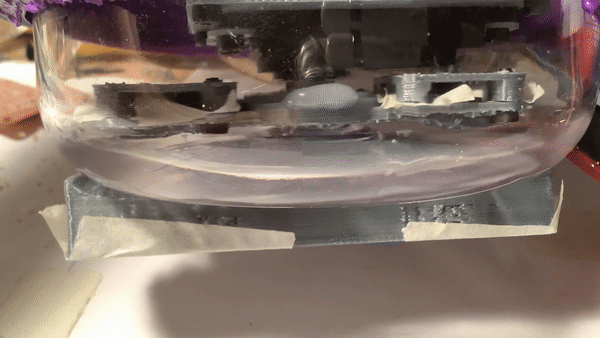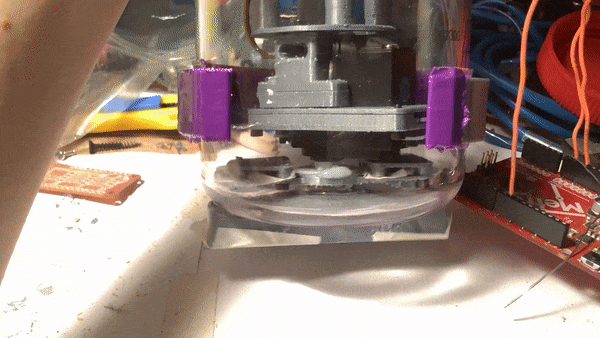
The concept works. Here you can see the servo moving inside the enclosure, while a piece outside the enclosure is also moving.
The hypothesis was that this type of coupling mechanism would be strong enough to hold the buoy to the reel underwater, overcoming the buoyancy force, water currents, and the splash-down into the water.
HOWEVER, The observations with this test do not support the hypothesis. The coupling strength between the internal and external piece is weak. Minor resistance permits the piece to lose connection.

The original test that supported this as an idea to test was sticking two magnets to each other between the polycarbonate enclosure, which provided a strong connection. The setup in this test differed from the original test in that there's additional separation distance between the magnets due to the material thickness and air gap between the pieces.
What could have been improved about this test? The result could have been arrived at sooner. The prototype should have been made out of cardboard and hot glue. Getting too caught up in the iterations of the curvature of the bottom of the enclosure invested too much time in design and fabrication.
The next steps are to contemplate these observations and figure out ways of trying to improve the strength of the moving pieces. If no improvement is found, then it's time to move to a different release mechanism. Likely within the constraints of this enclosure. One idea could be a very strong electromagnet that would trigger a latch.
This is a quick update post to share these results. Over the past few days has been a lot of tedious effort on iteration of those two pieces. Will share all the photos of that in a project log later.
Here's an extra observation. In slow motion, you can see how the movement of the external piece 'catches up' to the internal piece. Interesting!

 EK
EK
Discussions
Become a Hackaday.io Member
Create an account to leave a comment. Already have an account? Log In.